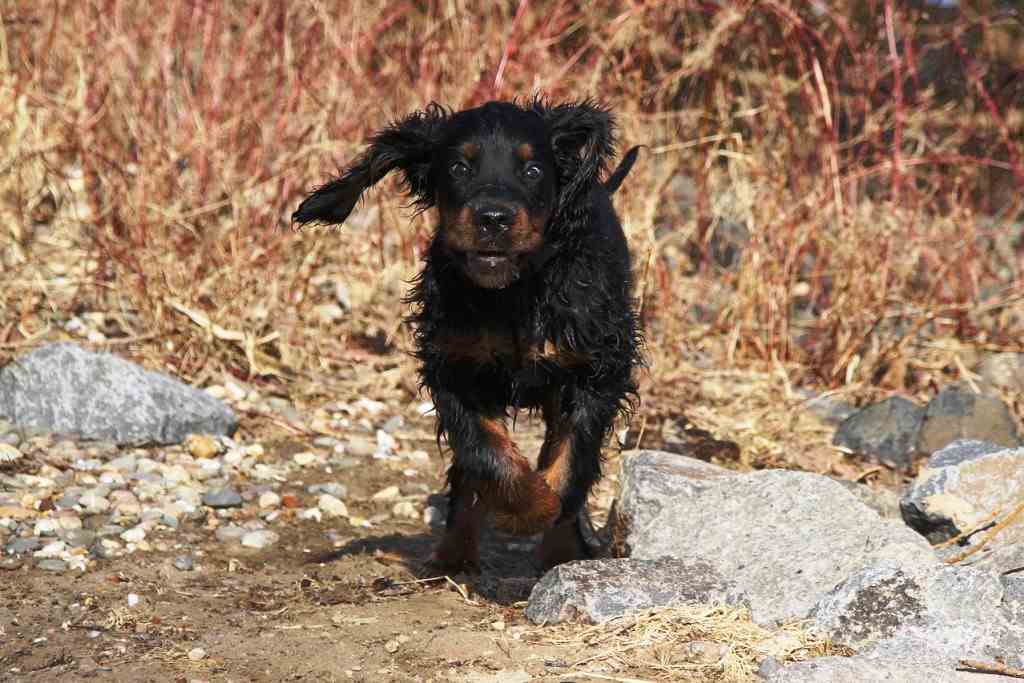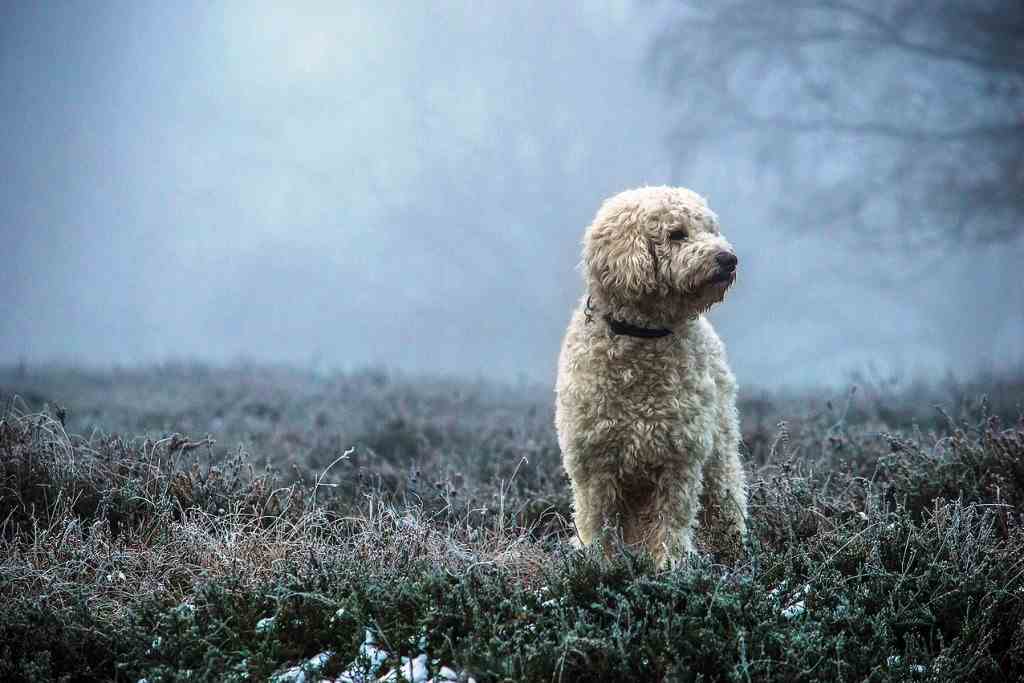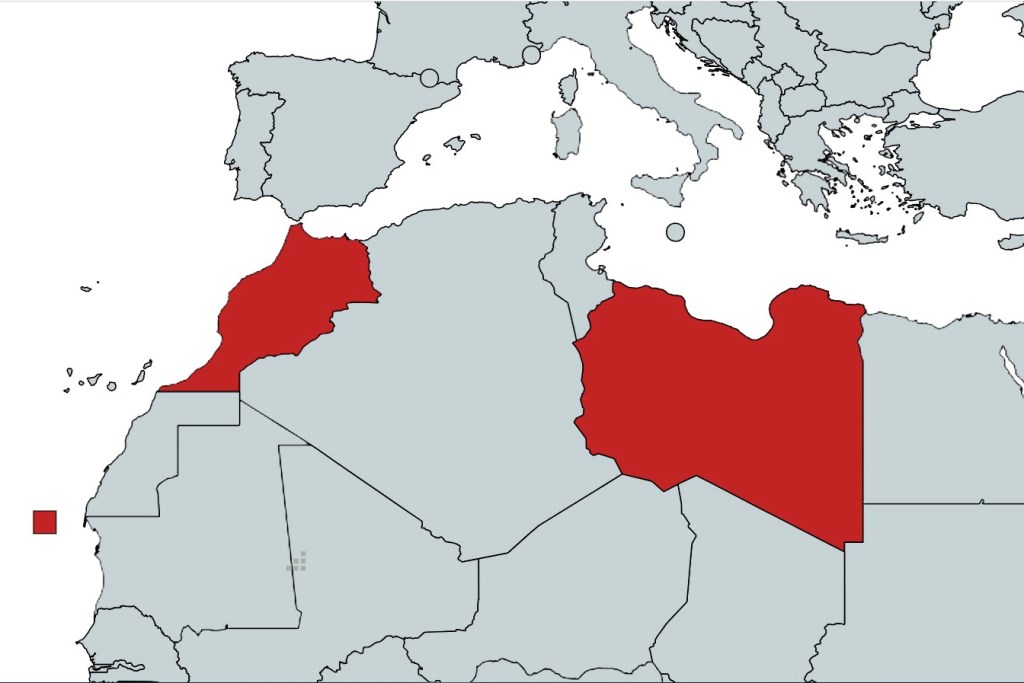The origin of the Gordon Setter dog breed is British and is the result of a selection with several breeds. It is supposed to be the result of a cross between an Irish setter and a collie, but in the selection one can also see the presence of dogs such as the bloodhound, the chien de Saint-Ubert and possibly also the pointer.It originated as a breed in the mid-nineteenth century and was named after Duke Alexander of Gordon, a Scottish lord who particularly appreciated this breed. It was then improved by breeders such as Lord Penmure and Major Douglas of Broughty.
Over time these breeders sought a dog with the ability to find game, stamina, firmness at the stop and the ability to adapt to the difficult terrain of Scotland. Compared to other setters he is more docile, obedient and easy to train, but he is also less fast as he is bulkier and heavier, so other setters were preferred to him and as a result he is much rarer.
He is also an excellent water retriever, particularly adept in marshes as he is an excellent swimmer, but he is also noted for his calm and thoughtful attitude in carrying out his work.
Character of the Gordon Setter dog breed
The Gordon Setter is a very calm, accommodating and very intelligent dog. In relation to its owner and its family, it develops a very strong sense of belonging, this combined with great loyalty. It was born as a hunting dog, but has proved to be an excellent companion and house dog.
It is a dog that always shows politeness, tenderness and obedience. It is very docile, so suitable for being with children with whom it loves to play. It absolutely does not want to be pushed aside, and cannot stand loneliness. It will therefore be unhappy if left alone for too long, in which case it will tend to be grumpy, shy and shy.
Towards strangers he is generally mistrustful, and this because of his hunter origins, he will always tend to protect his territory and his family from the slightest danger. Sometimes even fearful, and this also towards other dogs. This is why early socialisation is highly recommended for the Gordon Setter, but this is the only thing to do with him as his training is very easy and is therefore also suitable for those who are new to dogs.
As he is athletic, this does not make him suitable for the elderly or sedentary, as he needs, several times in a day, long walks to discharge all his energy, which is indeed a lot.
Appearance of the Gordon Setter dog breed
The Gordon Setter is a medium-sized dog, the height at withers of a male is around 66 centimetres for about 30 kilograms of weight, the female usually a little less. Its body is muscular and its physique is athletic, with a massive build, definitely heavier and more powerful than that of the English setter. Its peak in terms of movement is galloping, for which the setter is best suited. Its physical structure is very reminiscent of the body of the hunting horse.
The limbs are long, muscular and firm on the legs. The tail is straight or slightly scimitar-shaped and does not extend beyond the hock. It is thick at the base and becomes thinner as one approaches the end; the tail has long, straight fringe.
The head is large and square, deeper than wide, with a slightly rounded skull. The muzzle is long with pedunculated lips and a wide, broad black truffle. The eyes, neither sunken nor protruding, are brown with a lively and intelligent expression. The ears are pendulous, medium, fine and low-hanging, triangular in shape, very fringed and silky.
The coat is of medium length, flat, neither curly nor wavy over most of the body. On the head it is short and thin and on the front of the limbs and the tips of the ears. On the belly it is frayed. Its colour is shiny and intense black, with markings, especially above the eyes, on the sides of the muzzle, on the throat and on the chest.
Care and health of the Gordon Setter dog breed
The golden setter enjoys excellent health, in fact it rarely falls ill. It can however, like almost all breeds, be prone to hip dysplasia and stomach twisting. As it gets older, there may be a risk of some epileptic seizures. Possible risks of hypothyroidism and progressive retinal atrophy cannot be ruled out either. Life expectancy for this breed is 12 to 13 years.
With regard to coat care, it is sufficient to brush the dog every week and clean the ears regularly, as well as the eyes. As for diet, it only needs to be controlled and balanced, and above all it needs a lot of exercise.


